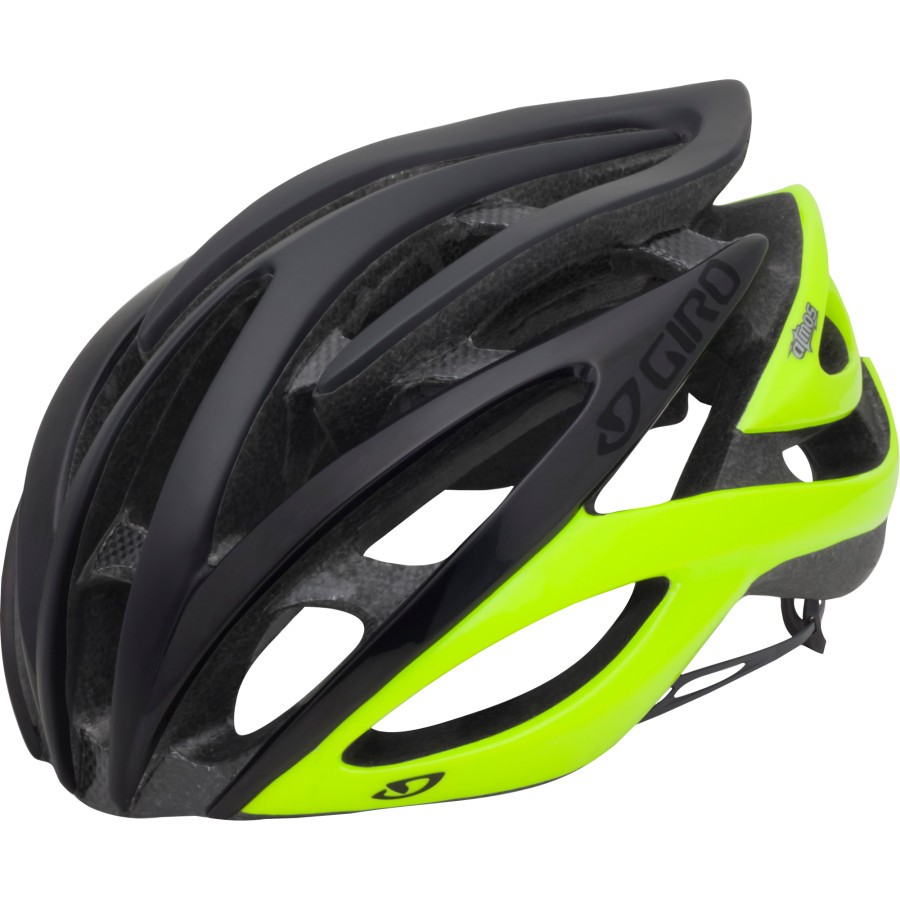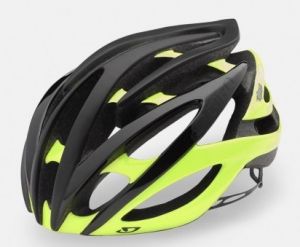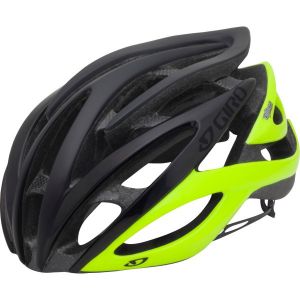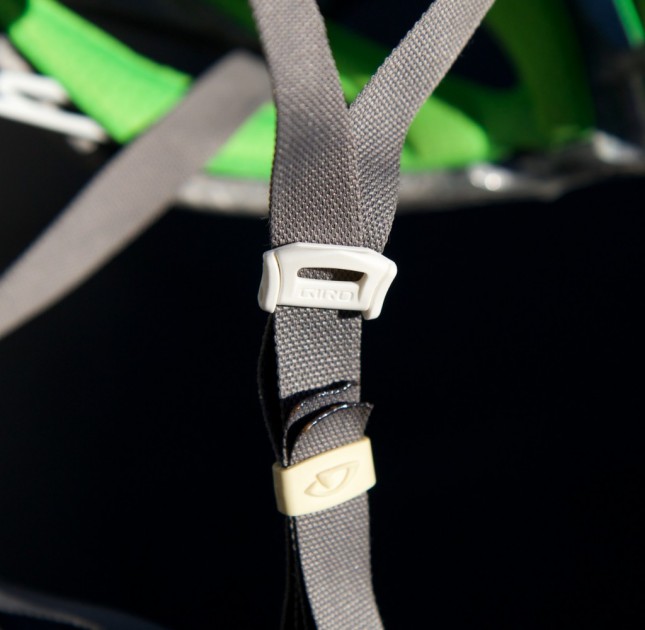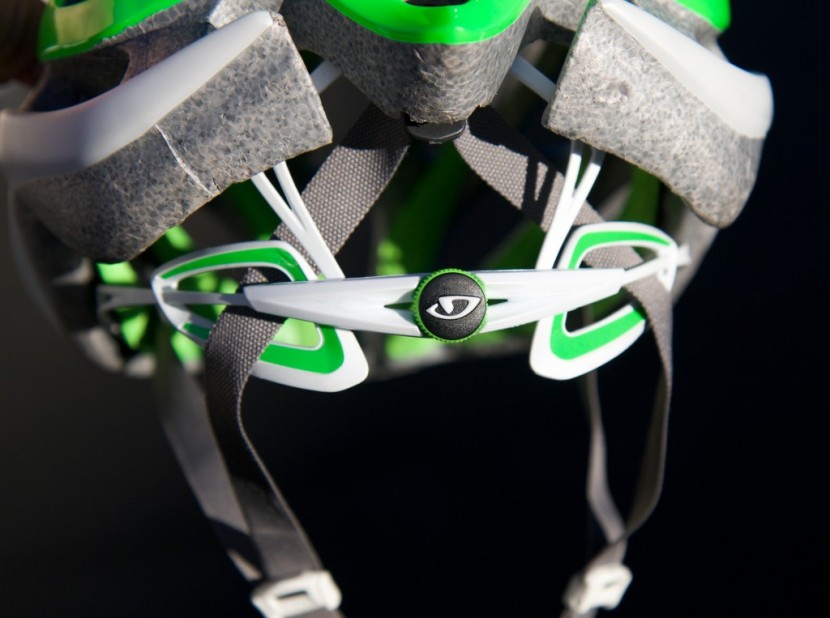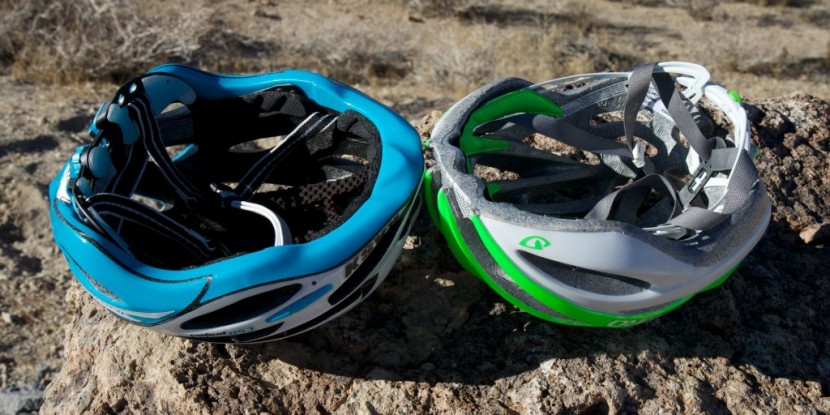The Atmos sits near the top of the Giro's road cycling line, just below the flagship Aeon. Giro touts the Atmos as the ventilation king in their helmet line. We agree that the Atmos is one of the best-ventilated helmets we've ever worn, but our testers couldn't perceive a difference between the Giro Aeon and the Atmos in our user test. The Atmos is a noticeable 1.45 ounces (41 grams) heavier than the Aeon in size medium. The Atmos is also less durable than the already fragile Aeon.
Like all of the Giro helmets in our test, the Atmos is available in three sizes. We found that it fit similarly to the Aeon, Savant, and Giro Xar, which all use the same RocLoc5 retention system as the Atmos. The Atmos comes in at least nine different colors to help you match your kit. The Atmos has been a part of the Giro line for some time now, and has been produced in a number of discontinued colors that may still be available around the net.Giro Atmos Review
Our Verdict
Our Analysis and Test Results
The Atmos II vs. The Atmos
This high-scoring helmet now has a new model: the Atmos II. Now retailing for $140, this successor is $40 cheaper than the original Atmos. It's also available in new color schemes and graphic designs. While we haven't had the chance to test this newer product ourselves, it doesn't appear that too much has changed. Check out the quote below to see what Giro had to say about this new product:
- Giro
Though we have not tested the Atmos II, we feel as though our review will still give you a good feel for the latest version of the helmet. Check out the side-by-side comparison below, with the latest version, the Atmos II, pictured on the left and the older version, the Atmos, shown on the right.
Hands-On Review of the Atmos
The Giro Atmos is a lightweight In-molded polystyrene and polycarbonate road biking helmet. The Atmos is very similar in fit and function to the Aeon, yet it costs $20 less. Unfortunately, the Atmos is both heavier and less durable than the Aeon.
Comfort
The Atmos is an incredibly comfortable helmet and we found it to parallel the Giro Aeon, which won our Editors' Choice Award. Our testers gave these two helmets top scores, coming second to the Kask Vertigo which scored a rare perfect ten in our comfort test and earned a Top Pick Award for being the most plush and comfortable road helmet we've tested.
Though the Atmos' interior padding is very minimal, we found it to be free from pressure points. It also uses flat webbing for the harness, which sits flat and comfortable against the face. The biggest contributor to the comfort of the Atmos is not the padding, but the weight, which is very low. The Atmos is one of those helmets you will quickly forget you are wearing, which says a lot about how comfortable it is.
Adjustments
The Amos has all of the necessary adjustments we look for in a cycling helmet, including chin strap length, fore/aft yoke adjustment, retention band circumference, and band height. This helmet uses the same the RocLoc5 retention system as the Aeon and Savant. This system became one of our favorites when we first used it on the Giro Xar which was one of the helmets we tested in our Best Mountain Bike Helmet Review.
Our favorite part of the Atmos' RocLoc5 adjustment system is the click wheel, which is used for adjusting the circumference of the retention band. This small yet powerful click wheel is easy to locate at the back of the helmet and allows for precision tightening and loosening of the band. The height of the RocLoc5's band can be adjusted into three different positions to suit your occipital lobe via a simple siding mechanism. This is an adjustment you are likely to make just once and then not mess with again. The Atmos also uses the same micro locking yoke hardware as the Aeon to adjust the fore/aft position of the chin strap.
The most adjustable helmet we found is the Kask Vertigo, which uses a highly articulating rear retention band to hold the helmet in place.
Weight
The Atmos is the third lightest helmet in our field of eight road specific lids. Our size medium test model weighed in at just 9.39 ounces (266 grams) on our digital scale. This puts it just ahead of the much less expensive Giro Savant, which tipped the scale at 9.48 ounces (269 grams) in a size medium. For weight weenies looking to get the most weight savings for the dollar, it would be hard to justify the extra $90 for the Atmos to save just 3 grams.
The lightest helmet in our test and one of the lightest cycling helmets on the market is the Giro Aeon, which weighed in at a featherlight 7.94 ounces (225g) again in size medium. Another notably light helmet is the POC Octal, which tipped the digital scale at 8.5 ounces (241 grams) and was the most ventilated helmet we tried.
Ventilation
Along with the Aeon, the Atmos took the second highest ventilation score in our user test. We've seen some claims by Giro that the Atmos is better ventilated than the Aeon. Our wind tunnel is on the fritz here at OutdoorGearLab, but what we can tell you is that our testers could not perceive a difference in airflow between the two. Only the POC Octal scored higher in ventilation than the Atmos and Aeon. All three of these helmets are excellent options for riding in warm weather.
The Atmos topped the vent count with 26. The Savant is just behind with 25, and the Aeon, Bell Array, and Kask Vertigo trail with 24. We've found that simply having more vents doesn't necessarily mean better ventilation. What's more important is how large the vents are and what percentage of the total helmet surface they make up. The POC Octal, for example, has just 21 vents but they make up a huge portion of the helmet's exterior and result in the best ventilated helmet in our test.
The Atmos has three air intake scoops in the brow area to help channel air through the helmet. This feature is similar in concept to some of the better ventilated top-rated downhill helmets we tested, which use overbrow intake ports to channel air through the helmet. The Aeon has one small channel in this area, but it is nowhere near as large as the Atmos's three. Despite the difference in design, our testers were hard pressed to detect a difference in ventilation between the two well-ventilated helmets.
Durability
Unfortunately the we found the Atmos to lack severely in durability. We awarded it the lowest score in our durability test which measures how well a helmet holds up to daily abuse rather than how it withstands a major impact.
The Atmos' most vulnerable section is the lower edge of the polystyrene which is left exposed by the very minimal polycarbonate shell. Our test helmet sustained significant dents and dings to the lower edge during our test. The worst area was the pointy sections of foam at the front of the helmet which began to chip off just from daily use. The Giro Aeon has similar points molded into the front of the helmet but does a much better job of protecting the delicate polystyrene by covering it in shell material.
Best Application
The Atmos excels at general road biking, road races, and riding in hot weather.
Value
The Atmos is slightly cheaper than the Aeon, but considerably less durable and slightly heavier. If you are contemplating the Atmos for $180, we recommend that you spend another $20 and get the Aeon which should satisfy your craving for lightness and may hold up to abuse slightly better.
If you are looking for the best helmet for the money, we recommend you check out the much less spendy Giro Savant which retails for half of the Atmos at just $90, is a bit more durable, and weighs an imperceptible 3 grams more.
Conclusion
The Atmos is a lightweight, comfortable, and well ventilated helmet which all of our testers enjoyed wearing. Its major drawback is the lack in durability because of the very minimal shell that leaves the foam prone to dents and dings from daily use.
We don't think the Atmos has any measurable advantage over its obvious competitor, the Giro Aeon. If you are trying to decide between the two we recommend you spend the extra $20 and go with the Aeon. We don't think you will be disappointed.


